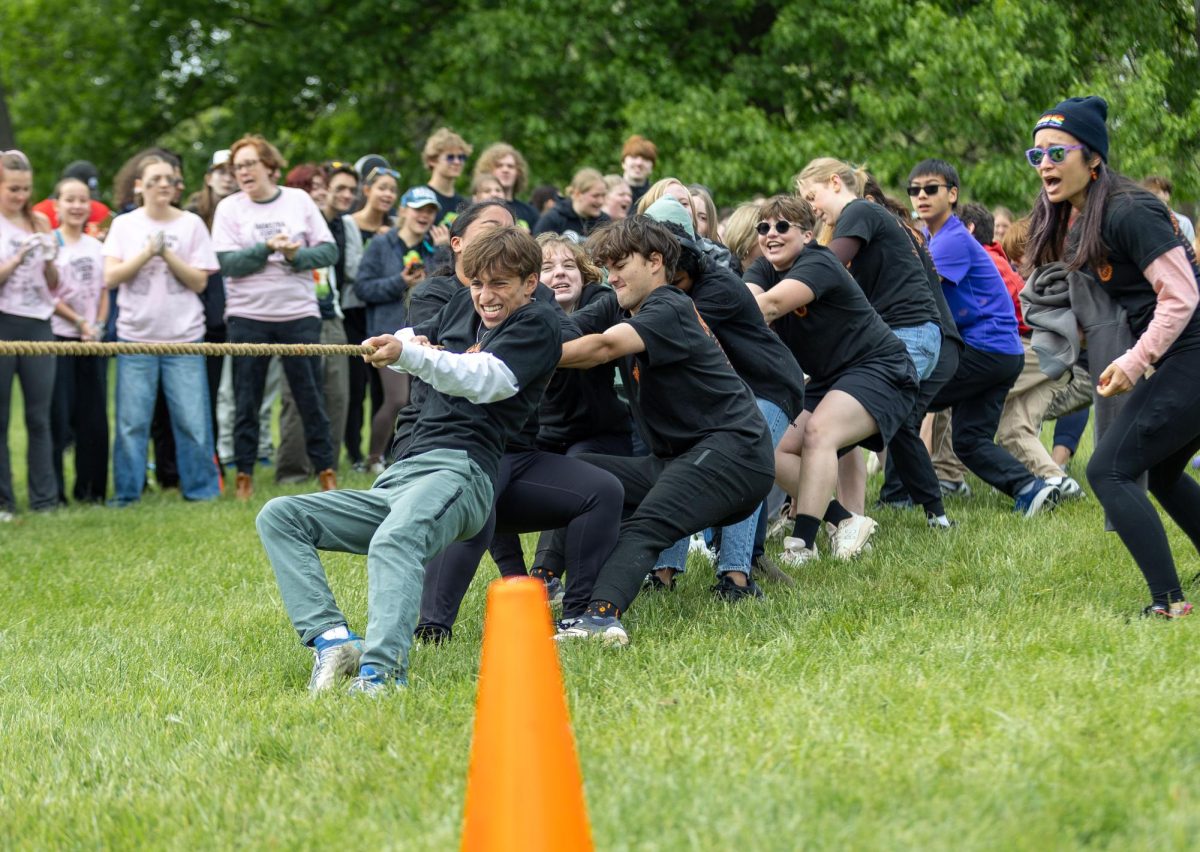As students pour out from the double doors onto the back lawn, you stay inside, and head to a classroom. You have 50 minutes.
While most CHS students enjoy a leisurely lunch period, others find themselves in classrooms, finishing homework, answering questions and taking tests. While it is not the most ideal time for students or teachers, both still manage to find themselves hard at work during what should be their break.
Frequently using lunch periods as a time to work with teachers is a price some students are willing to pay for extra help.
“Sometimes you want to go out with your friends at lunch,” said freshman Sari Greifer, “but yeah, I definitely think that sometimes it’s a burden and a hassle [to go do work during lunch], but I think it’s worth it.” Unlike her peers, who may miss out on an afternoon meal entirely, Greifer plans ahead and brings a packed lunch on days she receives help.
“I just [would] really rather have lunch with my friends,” said junior Emma Weichmann. Weichmann hardly ever comes to teachers for help, preferring to tackle challenging assignments on her own. “I can usually figure [assignments] out by myself without having to sacrifice that lunch time that I really like to spend with friends.”
Working lunch periods are a burden for teachers as well.
“Some days it feels like I’m heading to my next class without a chance to take a breath,” said CHS math teacher Anne Thomas, “but I do feel like it’s part of my job, and supporting kids [who struggle] in mathematics is, to me, really important, so it’s a priority, and if my lunch falls by the wayside, I feel like that’s what I got to do.”
Thomas can have 10 students in her room at any given lunch, giving her limited time for each student. “It feels a little overwhelming, because to really help people individually is difficult to do. You probably get to help each kid with a couple of questions but not real thoroughly.”
Weichmann did see more teachers at lunch in her sophomore year, but was left frustrated by the lack of individual attention she received. “I wouldn’t get any attention and I wouldn’t even get any of my stuff done, so it felt like I just wasted an entire lunch period. It’s hard to get the attention you need. I know some teachers are really good at that, but some are just too busy.”
FOS III teacher Liz Stern is no stranger to a bustling classroom during lunch. Stern often spends her 50 minute lunch breaks helping students one-on-one with labs, classwork and homework. With a full schedule, Stern sees lunch as a convenient time for both her and her students.
“Well, lunch is really the only sure time that I know kids can come in, and while I would really love to have a little break in the middle of the day, I have my prep time right afterward. And I didn’t mean to do that, but that’s how it ended up, and that ended up working really well.”
Stern encourages her students to use lunch as an opportunity to catch up on missing assignments, or to get help on difficult concepts, but she finds that helping absent students take up a big portion of her lunch time. “You just look at your attendance list and go ‘I’ve got an entire class of kids who are not here!’ You’ve got to mop up 15 to 25 kids, and then it’s like, ‘How am I going to teach it to them?’ I mean, that is a lot of the kids who come in.”
CHS Health teacher Robbie Stapleton thinks the common 50 minutes off that faculty and students share throughout the building is what leads to meetings, help, tutoring, and make up work. With so many teachers and students regularly working during their free time, it is important to consider the health benefits of a midday break.
“I’m sure you could come up with a good scientific study to support what we all know intuitively, which is, it does everybody some good to take some time during the day, to just relax,” said Stapleton. “Most of us have 15 to 20 minutes a day, if we’re honest with ourselves.”
“One really healthy thing we do is give ourselves 50 minutes. That’s really smart. And I do think it’s important, especially for kids who are athletes, to get some calories throughout the day,” Stapleton continued.
Working non-stop throughout the day takes its toll on Greifer. She admits that she often finds herself exhausted after working through her lunch break, “You kind of need that break at lunch to just kind of relax and take it easy sometimes…it’s kind of hard to stay awake during your next class.”
“It’s hard for kids,” agreed Stapleton. “It’s hard for me, to pay attention for an hour and a half. And that’s our block schedule. To do that, without a break in the middle of the day would be asking a lot of ourselves.”









